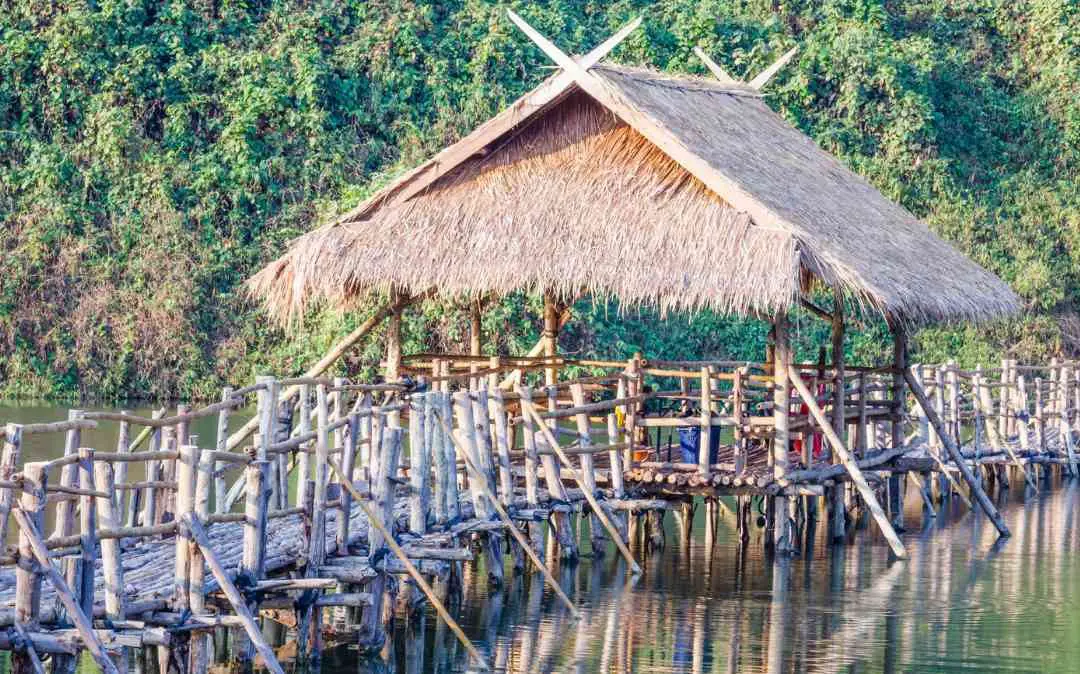Need some more convincing that bamboo is the tops? The super-grass can not only clothe, feed and shelter, but it can also save lives. In Vietnam, where major floods are common, H&P Architects have created affordable housing made from local bamboo that is constructed atop recycled oil drums, allowing the buildings to float.
The thatched homes are attached to the ground with anchors, keeping them in place when the waters arrive. The frames, roofing, and walls are arranged between steel piles, securing the structure. The floor is elevated, keeping animals outside was well as allowing space for the drums. Triangular cuts open the up the dwelling, creating cross-breezes and taking advantage of natural light. Horizontal doors open to form patios and awnings, but can be shut once the storms sweep through, keeping the inhabitants safe.
Suspended bamboo planters on the outside walls help grow vertical gardens that can be used for food, and rainwater collection systems that have the option of being inactivated during wet weather. Each home can be configured to accommodate families of six, or expanded for more people. Able to be assembled on site, each costs about $2,000.
Bamboo to the rescue
In the event of an earthquake, like the one that struck Central China in May of 2008, the government found themselves in need of temporary shelters. Bamboo to the rescue! Featured in San Francisco’s Urban Re: Vision 12 years ago, Ming Tang designed the beautiful Folded Bamboo Houses in order to provide protection from the elements. Lightweight, strong, and readily available, the plant was the perfect material of choice for his origami-inspired buildings. Poles are connected together in rigid, geometric shapes, creating modular forms that can be easily shipped and assembled to where they are needed most. Once built, they are then covered by post-consumer recycled paper.
When both earthquakes and typhoons hit, bamboo has literally got you covered. A group of Indian architects made up of Komal Gupta, Vasanth Packirisamy, Vikas Sharma, Sakshi Kumar and Siripurapu Monish Kumar entered plans for the 2011 Design Against the Elements Competition that envisioned an eco-community that consisted of a cluster of housing units, community centers, a library, meditation spaces, and green areas.
They also added locations for retail, rainwater collection, greywater systems, and plantations to make the project a vibrant mixed-use living neighborhood. The three-story houses were built on stilts with an element resistant core that holds water and power lines, bathrooms, kitchens, and staircases. Living pods rotate out from the core, made completely of bamboo.
Knowledge is power
New uses for bamboo are cropping up everyday, especially in the filed of innovative, sustainable architecture. If you’re interested in learning more about building bamboo structures, check out some of these fascinating articles.

























